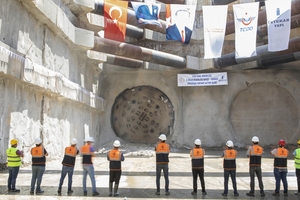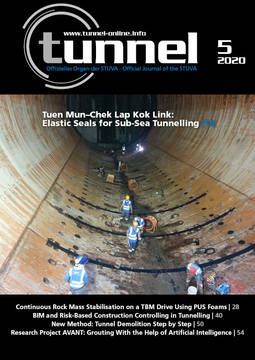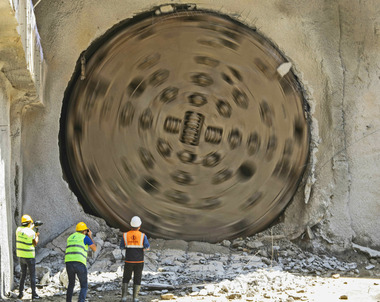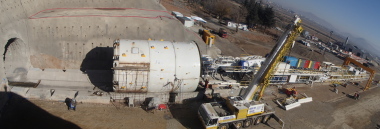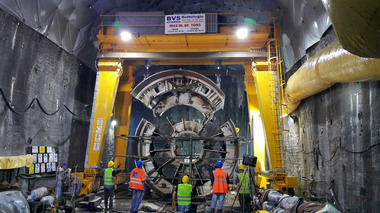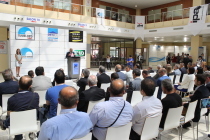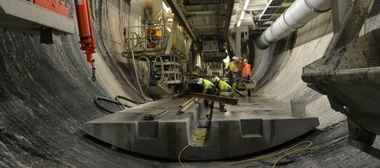Bahçe–Nurdagı Railway Project: First TBM-Drive Successfully Completed
The Turkish State Railways Directorate (TCDD) is aiming to overhaul the railway connection in southeastern Turkey by providing a shorter, faster route in one of the country’s busiest railway corridors. The new rail line between the towns of Bahçe and Nurdağı includes two parallel 9.8 km tunnels, being excavated by both NATM (850 m) and TBM (8.9 km).
On July 24, 2020, a milestone for the arduous Bahçe–Nurdagı High-Speed Railway Tunnel was reached: The first TBM-driven portion of tunneling using an 8.0 m diameter Robbins Single Shield machine is now complete. The 8.9 km long TBM tunnel was no easy bore, as it was excavated through some of the hardest and most abrasive rock ever encountered in the country.
Tunnelling Through Turkey’s Hardest Rock
Ground conditions during tunneling ranged from abrasive, interbedded sandstone and mudstone with quartzite veins to highly weathered shale and dolomitic limestone. The TBM encountered rock measuring between 136 and 327 MPa UCS. Water ingress with fines was expected in fault lines and shear zones affected by the East Anatolian Fault. “The TBM became stuck in three different fault zones, which we got through by building bypass tunnels. In smaller fault zones, we encountered excessive material flow and the TBM had to be stopped, while ground had to be stabilized with chemical injections while we cleaned the cutterhead,” said Deniz Sahin, TBM Chief for contractor Intekar Yapı A.S. Water inflows of 10 liters per second on average were removed using a dewatering system.
The majority of tunneling, said Sahin, was in metasandstone with quartz, with an average of 220 MPa UCS and a Cerchar abrasion value of 3.87. In such regions, the TBM’s 19-inch back-loading disc cutters had to be changed frequently and there was high vibration. Despite the challenges, Sahin was impressed by the machine’s overall capacity: “The Robbins Single Shield TBM’s motor power, hydraulic power and cutterhead torque were quite strong. The secondary ventilation and air suction systems inside the TBM were powerful. The connections between the gantries, scaffolding systems, walkways and working areas were good.”
The TBM ultimately achieved up to 456 m per month, a result achieved with the help of the continuous conveyor system for muck removal. “The electric motor and gearbox capacity of the conveyor system was quite enough for a 10 km (6.2 mi) tunnel and we had no failure on them. The conveyor performed well even under excess material and the whole system was quite robust,” said Sahin.

